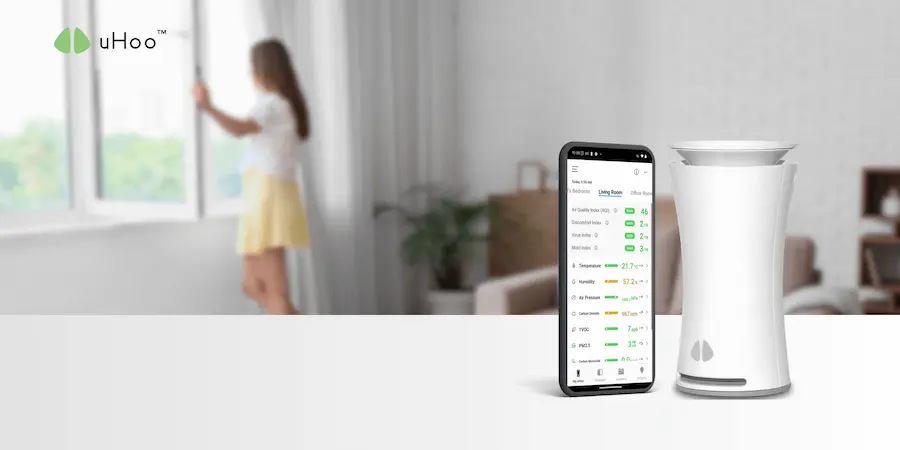The quality of the air we breathe outdoors is a constant topic of discussion. But what about the air inside our homes, where we spend the vast majority of our time? Often overlooked, indoor air can be significantly more polluted than outdoor air due to a concentration of various sources. Understanding how to improve your home’s air quality is therefore not just about comfort. It’s about safeguarding your family’s health and well-being.
How to Improve Your Home’s Air Quality – A Step-by-Step Guide
- Manage Indoor Humidity Levels – Your First Line of Defense:
- Why: High humidity (above 60% Relative Humidity) is the single biggest catalyst for mold and dust mite growth, which are prevalent in tropical climates and major causes of allergies and respiratory issues.
- Action:
- Dehumidifiers: Use in damp areas (e.g., basements, perpetually humid rooms) to keep RH between 30-50%.
- Ventilation: Always use exhaust fans in bathrooms and kitchens to remove moisture from showers, cooking, and dishwashing.
- Address Leaks: Fix any leaky pipes, faucets, or roof leaks immediately, as hidden moisture leads to mold.
- Ventilate Strategically – Open Up, But Wisely:
- Why: Fresh outdoor air dilutes indoor pollutants like CO2, VOCs, and stale air. However, uncontrolled ventilation can bring in outdoor pollution.
- Action:
- Check AQI: Consult local Air Quality Index reports before opening windows. Ventilate during periods of lower outdoor pollution (e.g., early mornings or late evenings).
- Create Cross-Breeze: Open windows on opposite sides of your home for short bursts to maximize air exchange.
- Use Mechanical Ventilation: Ensure exhaust fans in kitchens and bathrooms are working correctly and vented outside. Consider professional advice on how to improve your home’s air quality for whole-house ventilation systems if your home is very tightly sealed.
- Control Indoor Pollutant Sources – Prevention is Key:
- Why: Many common household items and activities release harmful chemicals (VOCs) and particulate matter.
- Action:
- No Indoor Smoking: Absolutely ban all smoking inside your home.
- Choose Low-VOC Products: Opt for paints, cleaning supplies, furniture, and building materials with “low-VOC” or “zero-VOC” labels.
- Store Chemicals Safely: Keep all hazardous chemicals, solvents, and pesticides tightly sealed and stored in a well-ventilated area outside the main living space.
- Mind Your Burners: Use range hoods when cooking, especially with gas stoves, to vent combustion byproducts. Minimize the use of scented candles and incense.
- Filter Your Air – Capture What Remains:
- Why: Even with source control, some airborne particles and allergens will inevitably be present.
- Action:
- HVAC Filters: Regularly change or clean your air conditioning system’s filters (every 1-3 months). Use higher MERV-rated filters (8-13) for better particle capture if your system is compatible.
- HEPA Vacuum: Use a vacuum cleaner with a true HEPA filter to effectively trap microscopic dust, pet dander, and allergens from carpets, rugs, and upholstery.
- Portable Air Purifiers: Consider placing a portable air purifier with a HEPA filter in bedrooms or other high-traffic areas, especially for allergy or asthma sufferers.
- Practice Smart Cleaning Habits:
- Why: Dry cleaning methods can stir up dust and allergens.
- Action: Use damp cloths and mops for dusting and floor cleaning to trap pollutants rather than just moving them around. Wash bedding, curtains, and rugs frequently, ideally in hot water to eliminate dust mites.
By consistently applying these actionable steps, you will gain significant control over how to improve your home’s air quality, creating a consistently fresh, healthy, and comfortable environment for your entire family to thrive in.
To truly master how to improve your home’s air quality and measure your progress, a uHoo air quality monitor is the best solution. It provides real-time, multi-sensor data on all critical indoor air parameters, empowering you to identify problem areas, assess the impact of your actions, and maintain optimal IAQ around the clock.



